In this article:
As a society, men and women alike have been obsessed with getting a suntan. Struck with this obsession, people are getting exorbitant spa treatments, hitting beaches, and visiting tanning salons – all in the pursuit of increasing their skin’s melanin.
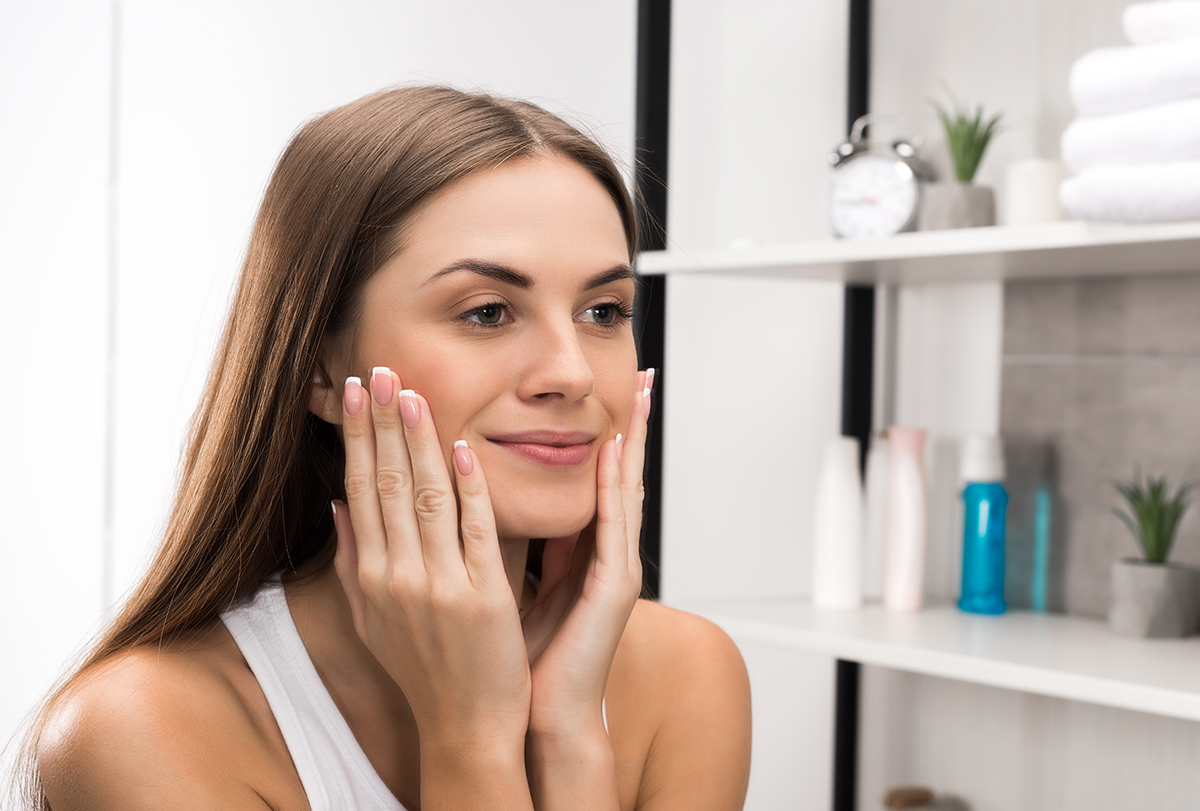
The buzz about the magic of melanin is all around social media and the Internet owing to its protective effects on the skin.
Skin color is the parameter that has been used widely to identify human races and ethnicity over the past centuries. History is replete with incidences where human skin color has been a cause of many controversies.
Melanin is the reason behind the diversity of skin color that the human population has. Besides that, pigment melanin also acts as a protective layer on the skin, protecting it from ultraviolet rays (UV) damage.
The curiosity around melanin has stemmed from its cosmetic, social, and protective effects on the pigmentation of an individual. (1)
What Is Melanin?
Melanin is a versatile pigment that imparts a characteristic hue to the hair texture, iris of eyes, and skin tone of humans and animals. It is produced by the pigment cells, called melanocytes, present in the skin epidermis, hair, eye, and other body parts. Melanin is produced upon the oxidation of an amino acid called tyrosine. (2)
This diversity of exquisite colors that melanin comes in is majorly an offshoot of the genetic makeup of the individual.
Melanin can range from dark colors of black and brown to brilliant yellow and red. Depending on the colors, melanin manifests itself in two forms:
- Eumelanin is the dark form of melanin commonly present in humans and animals as black, brown, or gray colors.
- Pheomelanin is the vibrant form of melanin, which when present abundantly gives a red color to the hair, freckles in some races, and a yellowish-red tinge to the feathers of birds.
Why Is Melanin Important?
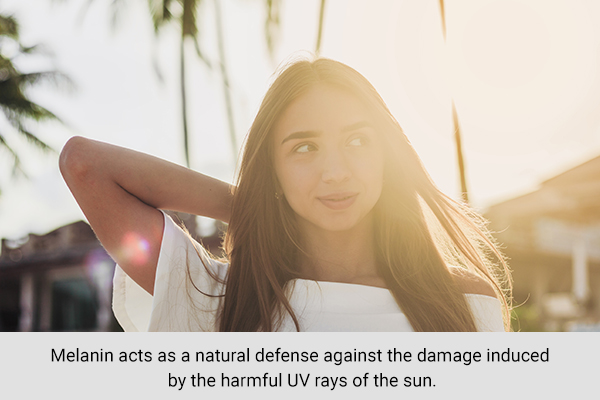
Melanin, being the primordial determinant of human races, has been the infamous cause of cruel and indiscriminate acts on humans since ages. However, groundbreaking discoveries in science have unfolded the real purpose of melanin that has enticed people to lie down in their tanning beds.
Melanin acts as a natural defense against the damage induced by the harmful UV rays of the sun. UV exposure is an environmental factor that contributes to the initiation of skin cancers such as squamous cell carcinoma (SCC), basal cell carcinoma (BCC), and malignant melanoma. (1)
Melanin is produced as granules in the melanocytes and helps absorb and distribute the light energy from the UV rays, to protect the genetic material in the cells.
A fluctuation in the hormonal or genetic composition of an individual can disturb the production and distribution of melanin and can result in skin conditions such as skin burns and other malignant conditions such as cancers and albinism.
How Is Melanin Increased in Your Body?
The complex process of melanin production, melanogenesis, is spurred by different factors, which can be influenced to up the levels of melanin in your body.
Aside from UV light, several nutrients such as amino acids and vitamins are involved in the production of melanin, which can help to move your skin tone towards the darker side and protect you from harmful UV rays.
Let’s briefly review the different inclusions in your routine that can help increase the melanin in your body.
1. Get a tan
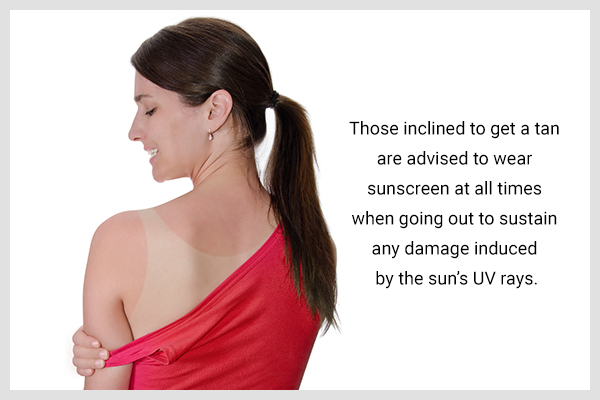
The definitive way to rev up your melanin levels is exposing yourself to sunlight. (3)
Although lying out taking a sun bask can give your skin a characteristic hue, it increases your risk of developing skin cancer, such as melanoma. Fortunately, there are several products available on the market that can be used as a shield to mask the harmful effects of sun exposure. (4)(5)
People prone to sun damage, the fair-skinned individuals, and those inclined to get a tan are advised to wear sunscreen at all times when going out to sustain any damage induced by the sun’s UV rays.
Exposing your naked skin to the sun 15 minutes a day can help in the production of melanin. You can also choose artificial UV sources such as tanning booths and tanning beds.
2. Incorporate tyrosine-rich foods in your diet
Melanin is formed by the oxidation of the amino acid tyrosine. Additionally, tyrosine also contributes to the production of various neurotransmitters that enable the transmission of nerve impulses. (6)(7)
As tyrosine is the precursor of melanin, include foods that contain tyrosine such as eggs, meat, chicken, cheese, turkey, and whole grains to boost the production of melanin in your body.
You can also consult your doctor for a dietary supplement rich in tyrosine.
3. Consume antioxidant-rich foods
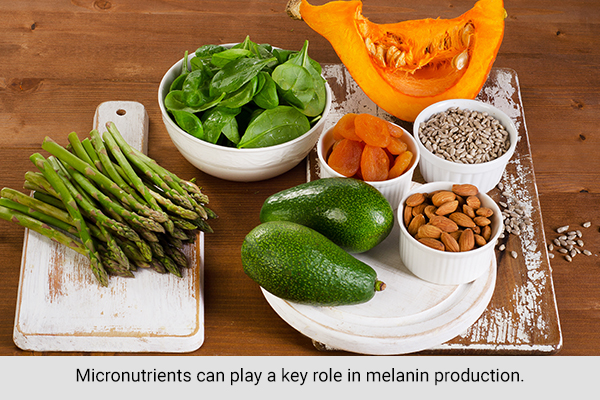
Antioxidants can help boost the production of melanin. Although some studies suggest that antioxidants may help, further research and trials are needed to approve its efficacy. (8)
Micronutrients such as polyphenols, flavonoids, and vitamin E are robust antioxidants that can play a role in melanin production. While many of the antioxidants can help develop a color, others may aid in reducing it.
a. Eat vitamin E-rich foods
Vitamin E has been commemorated for its role in skin health by way of its antioxidant properties.
There are no studies as of now that can correlate the link between vitamin E and increased production of melanin. Some studies suggest the protective effects of vitamin E on the skin against damage induced by the sun. (9)(10)
Eat foods rich in vitamin E, such as nuts (almonds, pine nuts, cashew nuts), vegetable oils (sunflower, soy, olive), and fruits including kiwi, mango, avocado, plums, and grapes.
b. Get beta-carotene
Beta-carotene is a precursor to vitamin A. Vitamin A can help skin cells mature and function properly. (11)
There is no clear scientific evidence regarding the ability of vitamin A to produce melanin. The skin-healing benefits of vitamin A can help in the production of melanin and strengthen the skin tissue, thereby acting as a potential agent to mask the harmful effects of the UV rays of the sun.
Including beta-carotene-rich foods such as carrots, tomatoes, red peppers, spinach, papayas, pumpkins, and melons in your diet will help keep your skin healthy and give your skin a natural tan that will last long. (12)
Note: Beta-carotene intake has been associated with an increased risk of tobacco-related cancers such as lung cancer. Hence, it is advisable not to exceed the normal dietary amount for people who are into smoking. (13)(14)
4. Take tanning pills
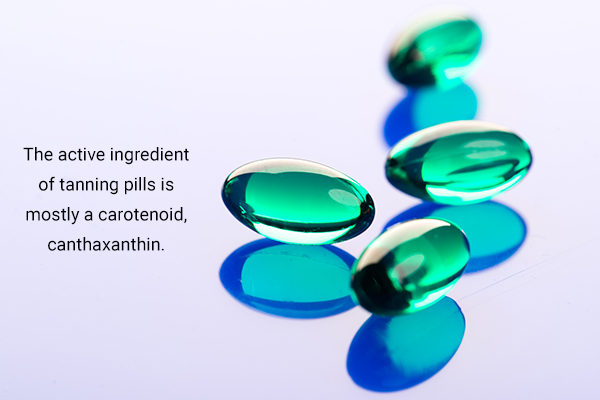
Tanning pills are available over the counter; they can be used to get a tanned look. The active ingredient of such pills is mostly a carotenoid, canthaxanthin. Resorting to such pills can help your skin attain an orangish-brown color, although this is not advised. (3)
Caution: Always consult your doctor for approval before you intend to start a supplement, especially if you are on medication. Canthaxanthin is FDA approved as a coloring agent in minute quantities, as its use in large quantities can cause adverse effects such as hepatitis, retinopathy, and gastrointestinal troubles.
5. Apply commercial sun tanners
Sun tanners are commercial products available on the market that can add a characteristic color to your skin.
Such products can be worn to give an illusion of a tan. These come in lotions, crèmes, gels, or sprays, and the color they provide fades over a period of time.
Always prefer sunless tanners that contain dihydroxyacetone (DHA). DHA works along the lines of melanin and blocks the harmful effects of the sun’s rays.
Where Does the Difference in Color Come From?
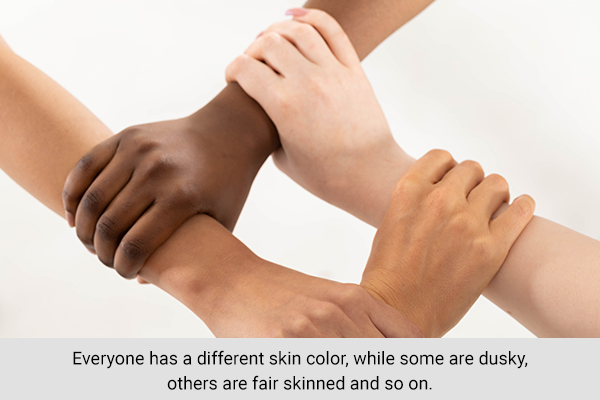
As per genetics, every individual on this planet has been blessed with approximately an equal number of melanocytes. Stating the obvious, everyone has a different skin color. While some are dusky, others are fair-skinned, and so on.
This happens due to a higher proportion of genes in the melanocytes being switched on to produce an excess amount of melanin from each cell.
This results in abundant melanin production from a single cell, not that the number of melanocytes was more than that in a fair-skinned individual. A person with fair skin is a result of less melanin production from the same number of cells.
Thus, the reason that discriminates us on the basis of color is the production of melanin. The production of this pigment relies on many factors such as:
- Genetic composition: Descendants of different ethnic races, and cultures, are genetically predisposed to produce a particular amount and color of melanin as an inherited trait.
- Exposure to UV radiation: The production of melanin is largely dependent on the stimulation of melanocytes by UV radiation. Melanin acts as a protective shield to prevent the skin from damage induced by UV rays. Individuals exposed to the sun are likely to produce more melanin.
- Size of melanocytes: The size of melanocytes can vary in people. This can cause a considerable difference in the production of melanin in an individual.
- Diseases: Some diseases may affect the production of melanin in an individual such as albinism, which is a genetic disease wherein an individual is unable to produce melanin, and vitiligo, which is an autoimmune condition marked by progressive loss of melanocytes. People with albinism are vulnerable to skin cancer especially if their skin is not protected against UV damage. (15)
Side Effects of Excess Melanin
Excess of melanin has undesirable consequences:
1. Vitamin D deficiency
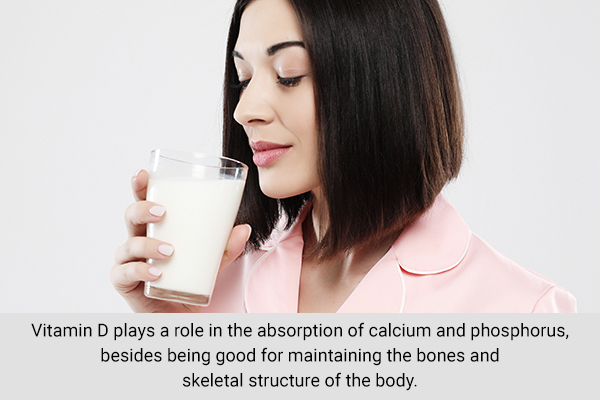
Excess of melanin can lead to vitamin D deficiency. (16)
The synthesis of vitamin D is triggered by sunlight, as it converts the precursor into its active form.
People with excess melanin are more susceptible to vitamin D deficiency with melanin acting as a shield that prevents the absorption of sunlight, which is required for vitamin D formation. This can also cause other medical conditions such as osteoporosis and rickets.
Vitamin D plays a role in the absorption of calcium and phosphorus, besides being good for maintaining the bones and skeletal structure of the body. It is necessary to keep a check on your vitamin D levels when being out on a tanning spree.
2. Hyperpigmentation
Excess exposure to the sun in a bid to boost your melanin levels can lead to hyperpigmentation, causing dark spots, melasma, and age spots. (17)
Final Word
Melanin plays a predominant role in giving your skin its unique color and protecting it against the harmful effects of the UV light of the sun. With such protective abilities, melanin has sparked the attraction for a tanned skin to combat skin malignancies.
You can up your melanin levels by feasting on antioxidant- and tyrosine-rich foods and exposing yourself to the sun 15 minutes a day. Wear sunscreen at all times to prevent hyperpigmentation, especially if your skin is prone to sunburns.
To avoid the flip side of excess melanin which is the deficiency of vitamin D, keep a check on your vitamin D levels.
- Was this article helpful?
- YES, THANKS!NOT REALLY


